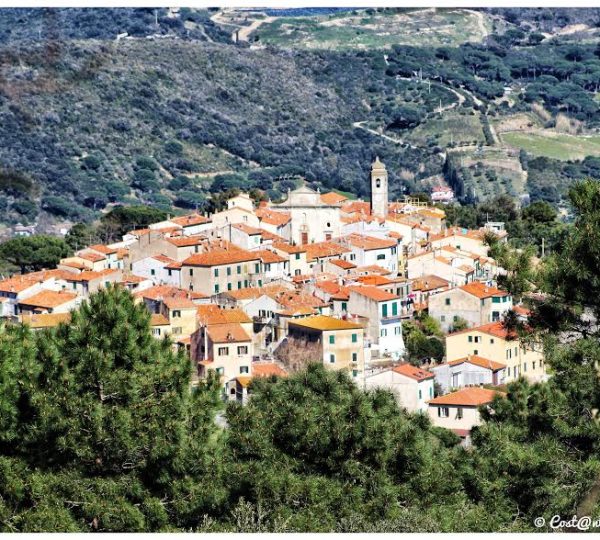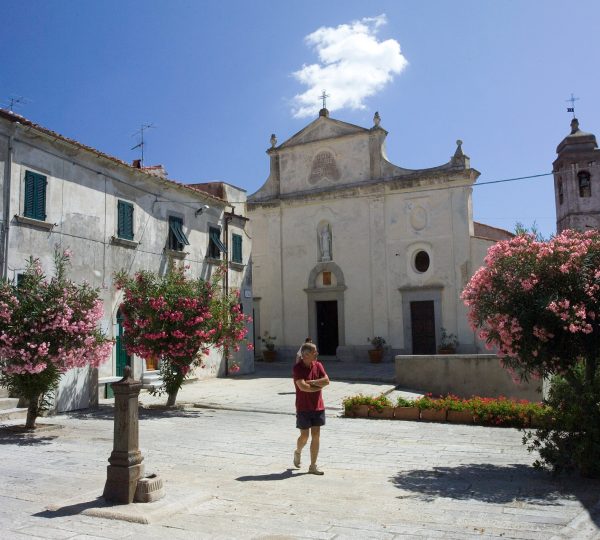- Anywhere

Sant’Ilario
The ancient village of Sant’Ilario, located above Marina di Campo at about 200 meters above sea level, is believed to have originated in the 7th century with a small number of modest dwellings. At the highest point, a Romanesque-Pisan style church was built, flanked and protected by a pentagonal watchtower.
After the end of Pisa’s rule, in order to protect the village and its inhabitants from frequent Saracen raids, the church was incorporated into a fortified structure in the 15th century. In the following century, the church underwent a significant expansion and a transformation in Baroque style, complete with its pentagonal bell tower. Around the fortress, the first group of houses was built, enclosed by a first set of gates that provided access.
Over the centuries, a second circle of dwellings expanded the small village, again protected by new gates. A third and final circle of houses gave rise to the current structure of the charming village as it can be admired today, with its piazza della fonte, where fresh spring water from Mount Perone is collected.
Sant’Ilario has always been known as the “Village of Music,” as it was the birthplace of the operetta composer Giuseppe Pietri, famous worldwide for operettas such as Acqua Cheta, La Donna Perduta, and others. The village’s narrow lanes, adorned in summer with vibrant blooms of geraniums and bougainvillea, make it a much-loved destination for many Italian and international tourists.


